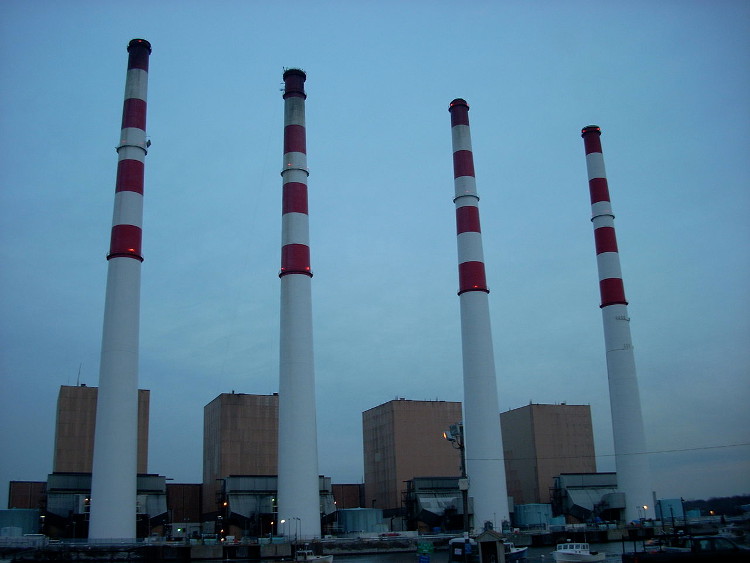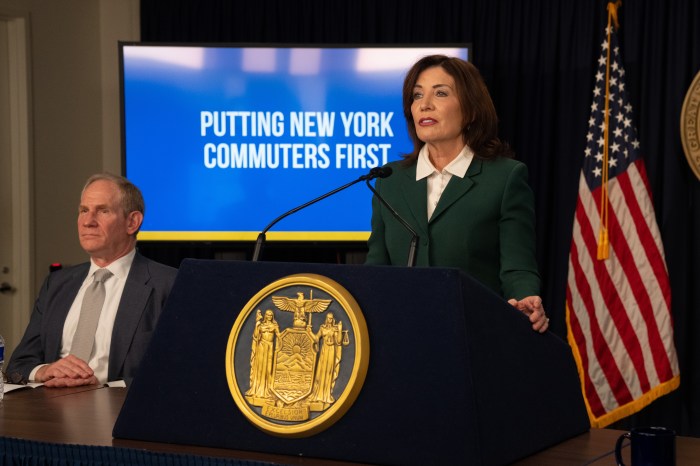Take a deep breath Suffolk County, the quality of the air you’ve been inhaling over the last several years is the worst in New York State.
For the 15th-consecutive year, the American Lung Association gave Suffolk a failing grade in its annual State of the Air report, which was released Tuesday and looked at ozone levels from 2010 to 2012. To make matter’s worse, the county’s “F” for ozone pollution was actually worse than the same grade it received in 2013, due to the greater number of unhealthy days calculated compared to last year’s report. Suffolk did, however, receive an “A” grade for particle pollution.
“If you live in Suffolk County,” the report states, “the air you breathe may put your health at risk.”
Coincidentally, Suffolk learned of the embarrassing “F” grade on the same day the U.S. Supreme Court ruled in favor of an Environmental Protection Agency provision limiting coal burning pollution from downwind states, which experts say travels to “upwind” states such as New York, causing residents here to bare the environmental—and financial—cost.
The Supreme Court’s 6-2 decision could significantly improve air quality over Long Island because traveling particles are partly to blame for harmful conditions that contributes to unhealthy ozone pollution in the region.
“This ruling is literally going to protect people’s lives from what we call second-hand smog,” said Michael Seilback, vice president of public policy and communications for the American Lung Association of the Northeast. “It’s pollution that’s being produced at these power plants and then being transported cross-country over to us.”
The American Lung Association, which joined the EPA in petitioning the court to hear the case, has never been able to grade Nassau County’s ozone pollution because air quality monitors do not exist there. Suffolk, however, has two: in Babylon and Yaphank.
But Nassau residents can get a sense of the quality of air they’re breathing in by looking to their neighbors west and east of them.
“Queens and Suffolk both have failing grades for ozone,” Seilback said. “I think you can make an educated guess that Nassau is dealing with similar air pollution but we just don’t know.”
The high court’s ruling won’t solve all the pollution-related problems facing the region.
Environmentalists also attribute Suffolk’s unhealthy ozone problems to the two National Grid-operated power plants in Port Jefferson and Northport and the thousands of trucks that travel daily on the Long Island Expressway.
“As long as we’re relying on old power plants that are 50, 60, 70 years old, which we are…we’re going to continue to have issues here,” added Seilback.
Still, Tuesday’s decision, handed down by a conservative-leaning court, is encouraging.
Supreme Court Justice Ruth Bader Ginsburg, in writing the court’s opinion, noted that “downwind States” are left to deal with the costs of traveling pollution, while the states in which the pollution emanates are “relieved of the associated costs.”
“Further complicating the problem, pollutants do not emerge from the smokestacks of an upwind State and uniformly migrate downwind,” she wrote. “Some pollutants stay with in upwind States’ borders, the wind carries others to downwind States, and some subset of that group drifts to States without air quality problems.”
Ginsburg, quoting from the Book of John, continued: “The wind bloweth where it listeth, and thou hearest the sound thereof, but canst not tell whence it cometh, and whither it goeth.”
The court, in reversing a decision by the D.C. Circuit Court, now enables the EPA to implement a provision in the Clean Air Act of 2011, which would require plants to reduce their sulfur and nitrogen dioxide emissions.
Also referred to as the “Good Neighbor Rule,” the provision was seen by the EPA as a “cost-effective” measure to protect air quality in neighboring states.
Opponents, including more than two-dozen affected states and utilities, argued that the provision was part of an ongoing “war on coal”—which would adversely affect economies in which the polluting power plants are based.
Justice Anthony Scalia, who penned the dissenting decision, criticized the majority for approving an “undemocratic” revision of the Clean Air Act.
“Too many important decisions of the Federal Government are made nowadays by unelected agency officials exercising broad lawmaking authority, rather than by the people’s representatives in Congress,” he wrote. “With the statute involved in the present cases, however, Congress did it right.”
He was joined by Justice Clarence Thomas. Justice Samuel Alito Jr. recused himself.
But Seilback, of the American Lung Association, said less traveling pollution is a win for downwind states like New York.
“A reduction of that air pollution is going to have a profound effect on health,” he said.
Whether Suffolk will improve its ozone grade, or if Nassau residents will ever be able to find out there’s, is an entirely different matter.
































